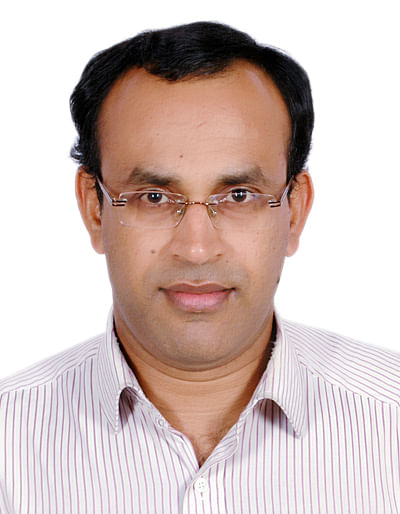The great Indian killjoy ride
A few months ago, two teenage girls lost their lives in the Najafgarh area of Delhi when they fell off a tractor they were travelling by on their way to college.
The fatal tractor ride was inevitable as there was no public transport to neighbouring Kair village where their college was located.
On the day of the tragedy, media headlines screamed: “A hall of shame in national capital.” The Sheila Dikshit-led government faced public outcry for failure to provide adequate public transport in the country’s capital city.
If the national capital, with its extensive metro rail network, confronts serious public transport problems, one shudders to think about the state of affairs in the rest of the country. In rapidly growing urban India, it has assumed crisis proportions, while the countryside silently suffers the inadequacies of our public transport system.
Urban centres like Mumbai, Delhi and Chennai have fairly well-networked suburban rail or metro systems. They are, however, over-crowded. According to one study, Mumbai’s suburban trains must carry more than twice their maximum design capacity, particularly during the peak hours. But in most other big cities and rural India, the mode of travel is bus-centric – buses primarily run by road transport corporations of respective states. Estimates are that about 70 per cent of the travel in the country is bus-based.
However, bus transport network – predominantly run by state transport corporations and in many states also by private service providers – is highly inadequate and disorganised. Travel by state-run buses is an unpleasant experience and unsafe.
They are over-crowded. The private players face complaints of crew misbehaviour, over-charging, negligent driving etc. In Delhi, the government had to withdraw private buses after public outcry against bad state of buses, rash-driving, ill-treatment of passengers and poor punctuality. One of the reasons for the unsatisfactory state of privately-operated public transport system is the absence of proper regulatory mechanism.
But since the public transport bus services are provided by state road transport corporations, the onus is on them to ensure an efficient and traveller-friendly service. Unfortunately, the state of affairs is far from a satisfactory one.
Independent researchers have warned of a crisis situation, and the Union Ministry of Road Transport and Highways, in one of its latest reports for the year 2010-11, has stated that the service provided by state road transport corporations is “negligible, weak, and needs immediate attention.” The failure to address the problem adversely impacts the country’s economic growth targets, since an efficient public transport system fuels growth.
South, a trail blazer
Indeed, the Ministry’s statistical data is very revealing. The states that have failed to provide an efficient transport system are also the states that have lagged behind in terms of economic growth in recent years. For instance, the Bihar road transport corporation provides four buses for every 10 lakh people, in Odisha the figure is eight, West Bengal 23 and Uttar Pradesh 43. The national average stands at 126.
The contrast is sharp. The economically better performing states like Maharashtra, Karnataka, Tamil Nadu and Andhra Pradesh also have a far superior public transport system operated primarily by their respective state road transport corporations. In Karnataka road transport corporations run 348 buses for every 10 lakh population, Maharashtra has 206, Tamil Nadu 275 and Andhra 258.
There are more disturbing data. Over 70 per cent of the country’s road transport corporation-run buses are in the four states of Maharashtra, Andhra, Karnataka and Tamil Nadu. And, if you add to these states, Gujarat, Delhi and Rajasthan, the seven states account for nearly 85 per cent of the road transport corporation buses available in the country for public transport. These states don’t even account for 50 per cent of the country’s population.
But, the state of affairs in the top four better-placed states, particularly in their urban centres, is far from satisfactory. Though Bangalore has the highest number of public transport buses for any city in the country, commuting in the city is hardly a pleasurable experience. As a result, there is a mushrooming growth of private vehicles – two-wheelers, autos and four-wheel vehicles.
Roads choked
Those who can afford a private vehicle buy it to avoid the daily hassle of commuting. This, however, has meant that the roads are choked, making it more difficult for the buses to ply and, thus, also making them a still less attractive mode of travel. What is the way out? In big cities, planners, both at the Centre and in the states, have initiated measures to introduce mass rapid transport system, including metro.
The progress, perhaps, barring Delhi, has been very tardy. The Centre has introduced a scheme – Jawaharlal Nehru National Urban Renewal Mission – under which it extends financial help to strengthen public transport in big cities. It remains a small step limited to a few cities. Promotion of privately-run public transport service has not made desired progress in view of the lack of proper guidelines and control mechanism. In the absence of a regulatory mechanism, private public transport service has not been to the satisfaction of the travelling public, though in some parts of the country they are efficient and successful. The state road transport corporation services need to be strengthened.
What is urgently required to ensure this is to improve efficiency, productivity and their financial viability. Most road transportation corporations in the country, except the ones in Karnataka, are incurring losses year after year. State governments need to address this urgently, before the chaos turns into a deeper crisis.
Inputs: Sanjay Pandey (UP), S T Beuria (Odisha), Sibal Gupta (West Bengal), Abhay Kumar (Bihar), Devika Sequeira (Goa), A Harikumar (Kerala), Swati Bhan (Gujarat).
